



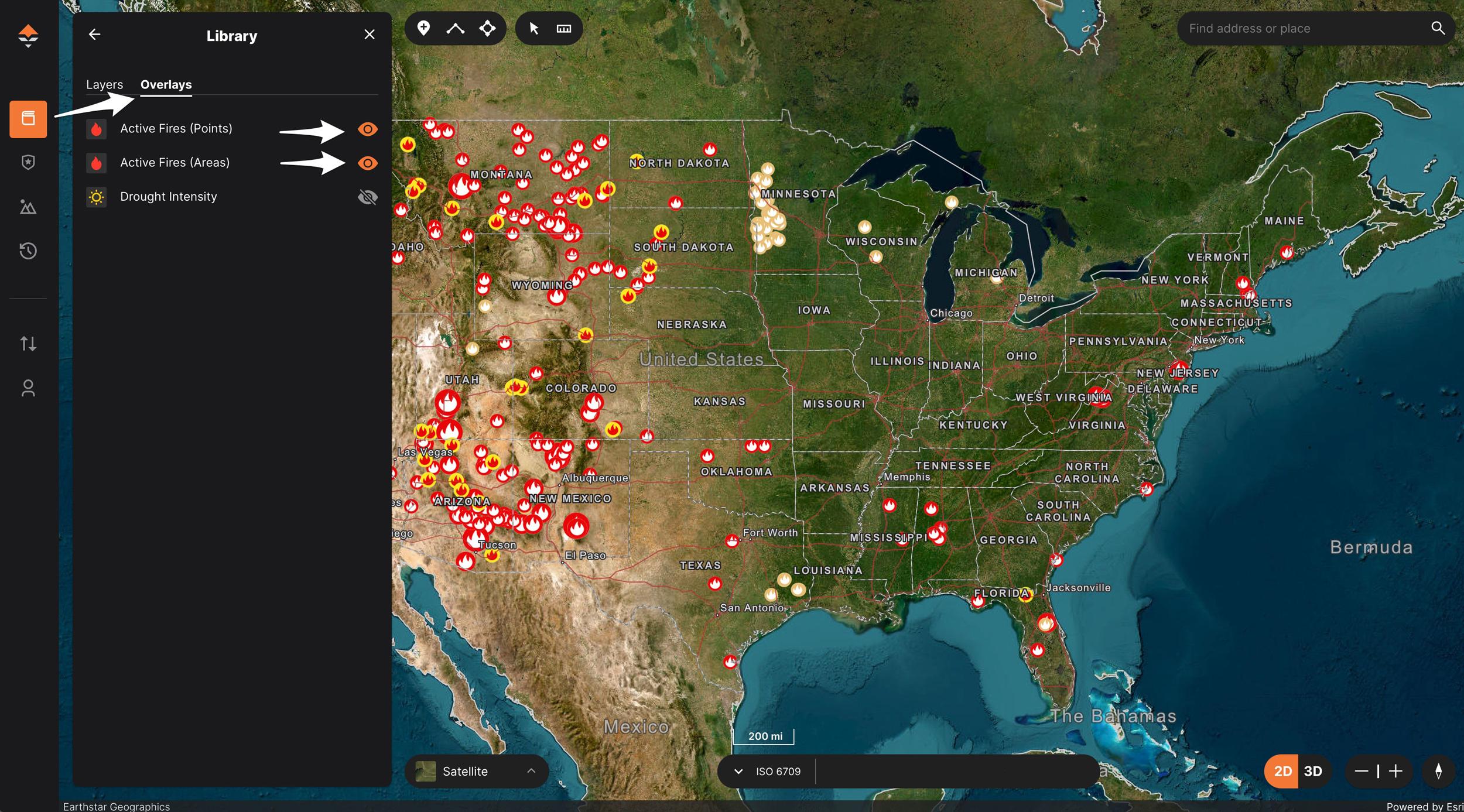

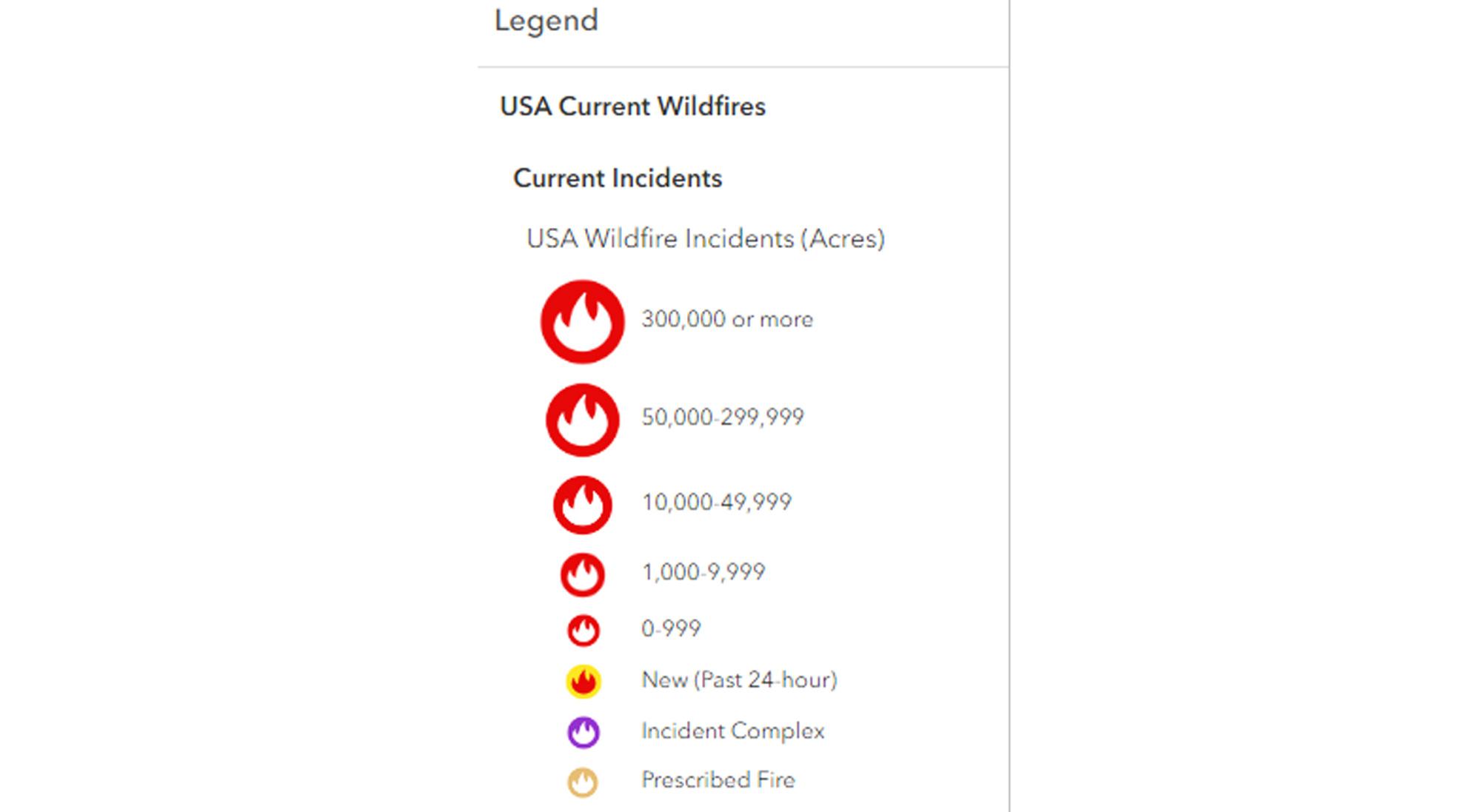
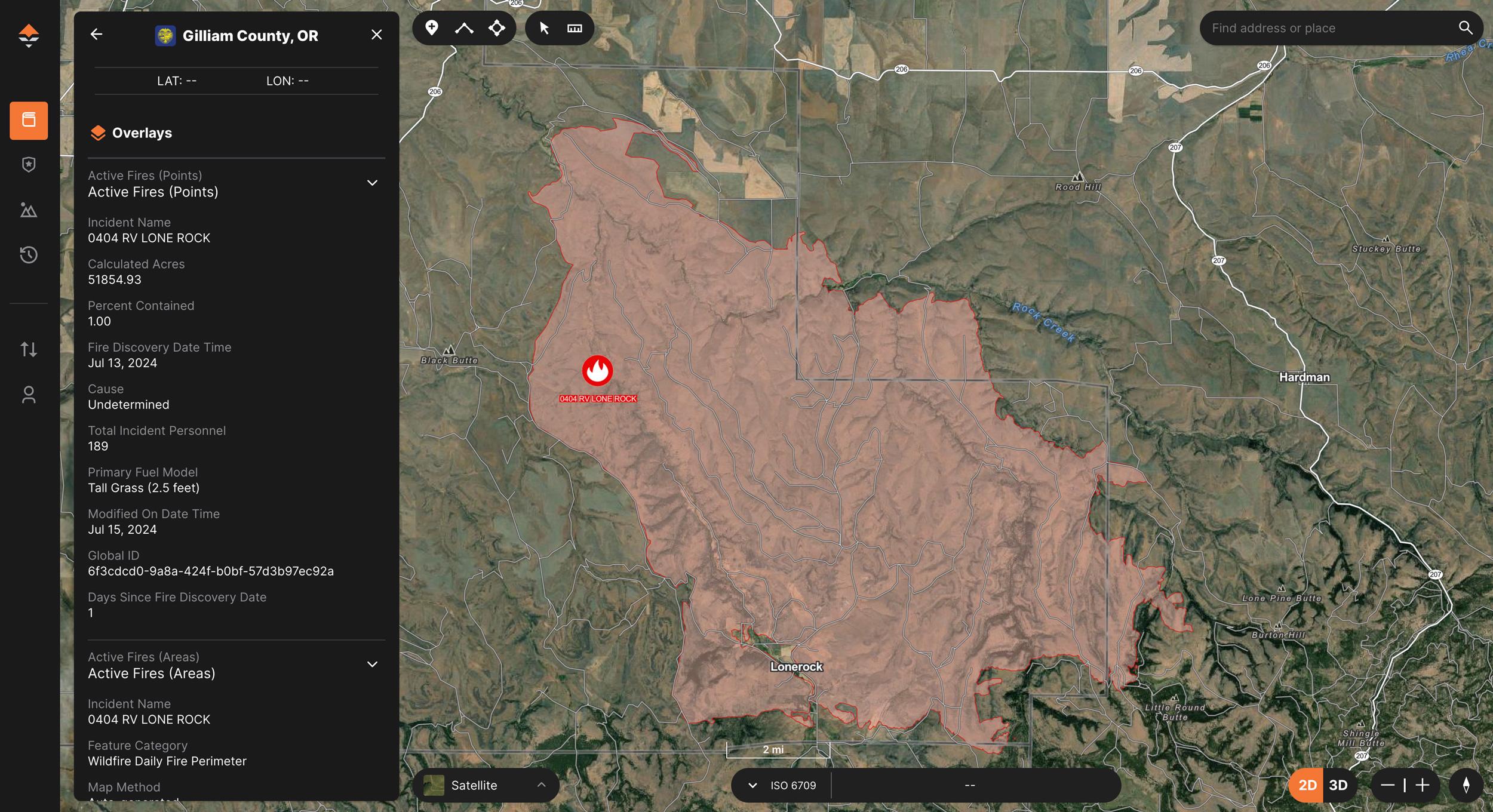
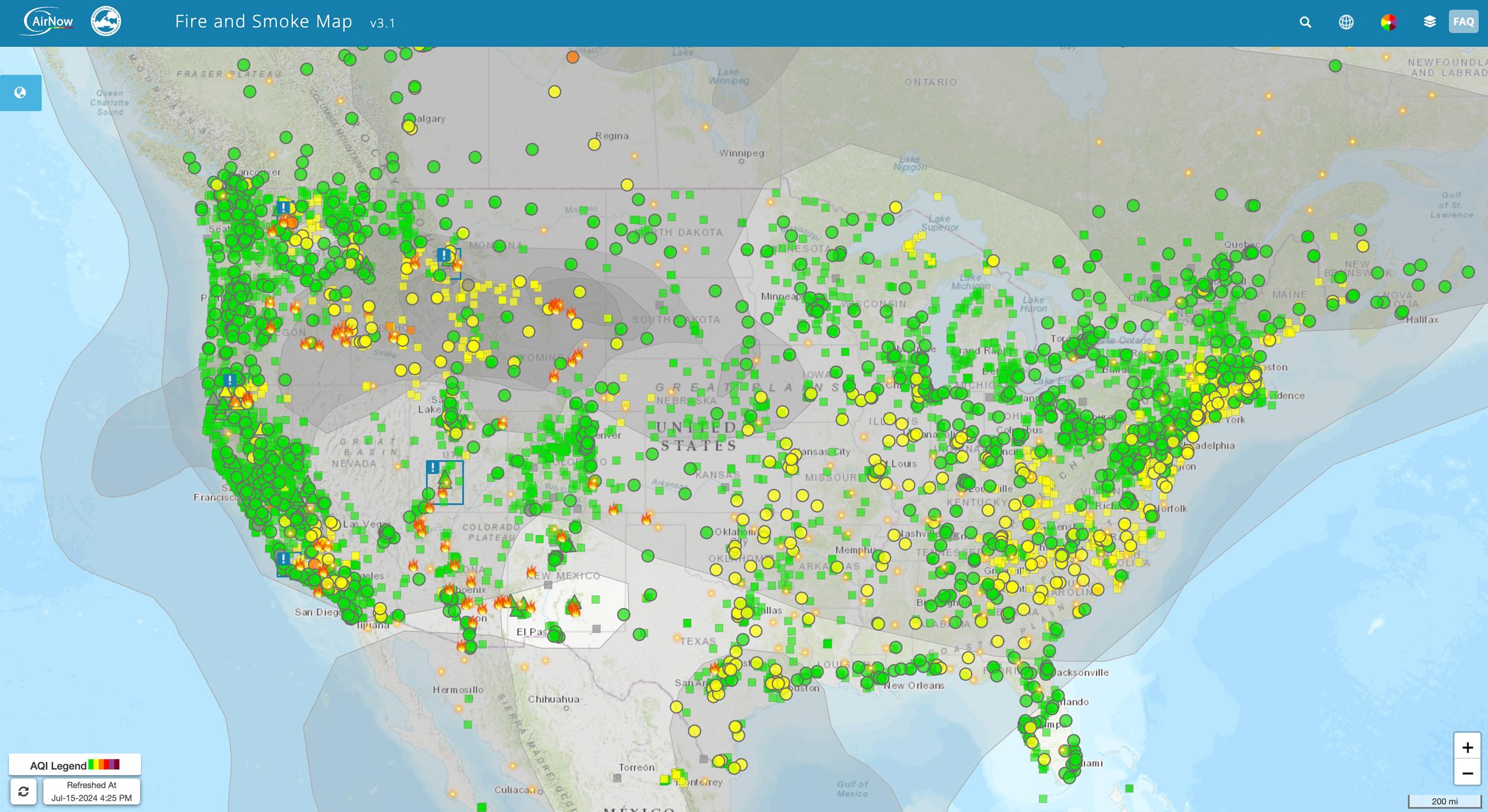
AirNow fire and smoke map for tracking air quality conditions when hunting.
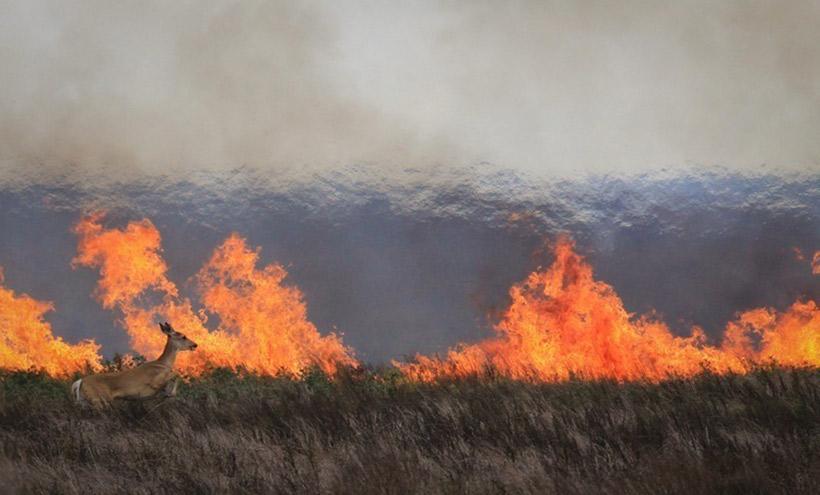
A deer makes a quick escape to avoid the flames of a local wildfire.
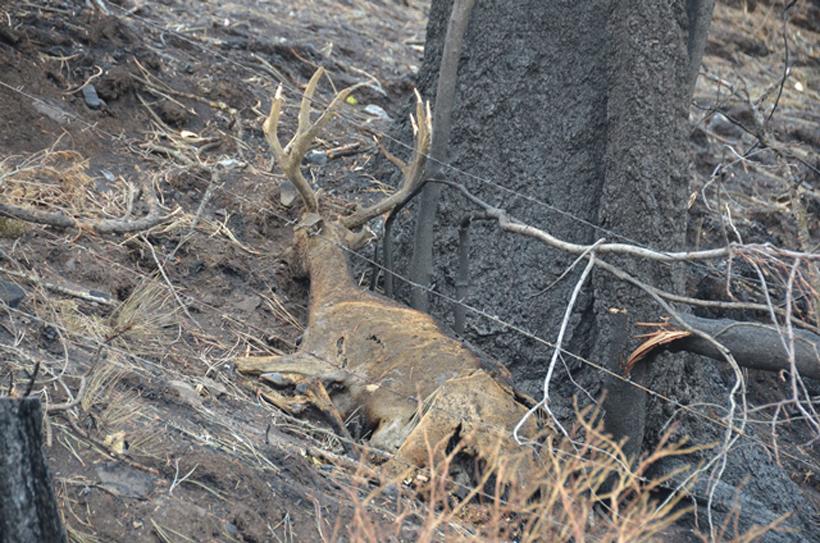
Buck likely died from smoke inhalation and then was burned.

Wildlife ranges are charred during fires.
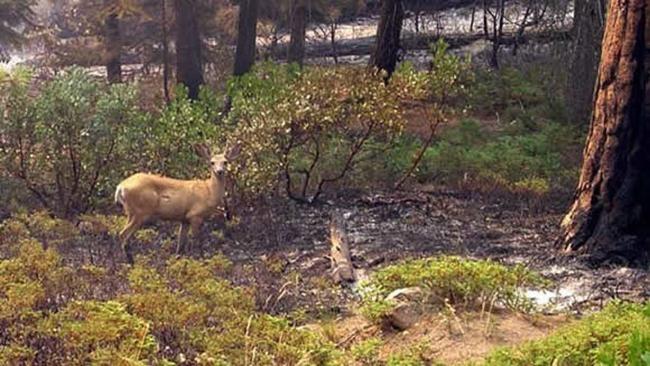
A deer returns to a recently burned area to feed.
Wildfires often portray images of death and destruction — roaring flames, billowing smoke, blowing ash. They tear across the land, wreck hunting season plans, blaze through containment lines, and force both people and animals to flee their homes.
Yet amidst such devastation, there's hope. As much as it would seem that wildfires have catastrophic impacts on wildlife, scientific studies and anecdotal evidence indicate quite the opposite. As it turns out, fire does not always negatively impact wildlife populations. Wild animals respond and adapt to fire in a number of ways, and it's well-known that many species actually benefit from wildfires.
Wildfires hit when you least expect them. You might have finally drawn a tag after 15 years of applying, and then a wildfire hits your unit. Or maybe you're looking to apply for a unit, and want to know the fire history to find old burns? All is technically not lost when there's an active wildfire or old wildfire in the unit you want to hunt. You'll need a way to track wildfires in real time, and we have you covered!
Below, you will find ways to track active wildfires in GOHUNT Maps and some information on their impact on big game populations. If you want to see previous years' wildfires on a map for e-scouting or planning your upcoming hunt, be sure to check out our Nationwide Wildfire Layers here.
Wildfires have been a major factor in shaping landscapes and influencing productivity throughout North America for thousands of years. And wildlife communities have evolved accordingly, developing various ways of avoiding or escaping fire and adapting to the post-fire environment. Animals, like people, know all the ways in and out of their homes and react accordingly to a fire. Luckily, most animals escape wildfires. A few years back, wildlife officials in California weighed in on the impacts these have on mule deer and their habitat.
If a wildfire breaks out near your hunting area, you must also use wildfire data to plan your hunt.
Nothing is worse than a wildfire in your hunting area or arriving at your trailhead only to find out that your hunting area is still closed due to past fire dangers. If there is or was a fire in your hunting unit... you'll need to do some additional research before the season opens. I'm always on GOHUNT Maps e-scouting before my hunting season and one of the best resources for a hunter looking to get a real-time wildfire update before their hunt is to check out our Overlay section when you're on GOHUNT Maps web version. These overlays show active wildfires all across the US and the layers for wildfires are automatically updated each day to ensure availability of the best and latest information. You can zoom in to see the exact size of a wildfire with a polygon layer, and also, you can click on the highlighted layer and see all of the information pertaining to a wildfire such as when the previous update was made and stats about the current wildfire conditions.
The process of tracking real-time wildfires on GOHUNT Maps is very simple.
Open GOHUNT Maps on the web and then navigate to the Library which is the first action item on the left toolbar. Then click on "Overlays" and turn on Active Fires (Points) and Active Fires (Areas).
What you'll now see is every active wildfire across the entire United States.
If you click on an Active Fires (Point) or Active Fires (Areas) you'll be able to get information about that wildfire. You can see the following:
Another tool would be to use Incident Information System. I use this to figure out fire closures. It really doesn't help much in mapping out the fires, especially since I do all of my e-scouting on GOHUNT Maps.
Back when I lived in Montana, a few wildfires were near my hunting area one year. I honestly didn't think much of it at the time because the fires were not going to have a negative impact on my hunt and were not posing a safety risk by jumping into the unit I was hunting, but I was sort of at risk due to the smoke. I woke up one morning to my basin completely socked in with smoke. The smoke was so bad that I experienced some periods where it seemed to be hard to catch my breath while exerting energy hiking and I was starting to cough. I used an extra shirt around my mouth to hopefully filter out the smoke particles when hiking and sitting around camp. Luckily for me, the wind eventually changed, and I wasn't blasted with smoke anymore. The smoke almost got to the point where I wanted to switch locations.
Exposure to smoke can quickly result in sore eyes, and coughing and can cause more serious lung problems the longer you are exposed.
If you're hunting near a wildfire, I think checking the Air Quality Index in the area and viewing real-time smoke monitoring on AirNow.govis one of those important steps that could benefit your health.
Since large mammals, such as deer and elk, depend on vegetation for forage, bedding, cover, and thermal protection, they are forced to abandon burned areas if the fire removes many of the habitat features they need. One problem that arises with displaced wildlife is that population densities increase in areas with proper habitat features. This could lead to increased competition for available food and water, often forcing animals to seek refuge in communities and subdivisions, creating conflict with people.
When there is not ample range for the animals to migrate to, mortality increases. A great article can be read by Wyatt Bechtel about the 2015 Canyon Creek Complex Fire in Oregon. In August of 2014, the Carlton Complex fires — the largest recorded wildfire in Washington state history — nearly 100,000 acres of winter range deer habitat was lost. This area is critical to the local deer and the 10,000 mule deer that migrate from the Cascades. Without enough cover or food to survive the winter months, and without anywhere to migrate, the deer are likely to perish during the hard winter weather. To prevent massive dieoffs, the Washington Department of Fish and Wildlife Department was forced to take steps to reduce the size of the herd. One such measure was the increase in antlerless deer permits during that hunting season.
However, if a recent burn provides some, but not all, habitat requirements for a species, the animals may stay near the edges of a burn. The scorched land often becomes a perfect new home for animals. A cycle begins, perhaps lasting decades or even centuries, until the forest grows back and the burned-out animals return. Generally speaking, plants and animals that prefer open fields, nutrient-rich soils, and sunlight will benefit soon after wildfires. While animals that prefer deep, dark, damp forests must move on or remain on the fringes. Mule deer and elk will often take advantage of the fresh vegetation that grows shortly after a wildfire. The nutrient-rich ash acts as fertilizer for the new plants. The new plants often have more flavor because of the nutrients; because of that, the plants absorb more water and become more filling.
Keep in mind that the return of animals to post-fire areas also attracts predators. Predators take advantage of post-fire environments in which their prey do not have the usual coverage to hide and become easy targets. This is especially true in areas of Idaho, Montana, and Wyoming where wolves are present.
In the long run, wildfires can have many benefits for the overall forest as well. Most fires will leave islands of trees, can sterilize the soil, and even open up some areas for sun and moisture to help the re-growth. Mule deer populations in chaparral burned by stand-replacing fire often increase, benefiting from the increased availability of browse. Fawn production also tends to increase in the following years. Most other ungulates, such as elk, whitetail deer, and moose, either respond neutrally or positively to post-fire changes in habitat.
The population of large carnivores changes little in response to fire, but generally speaking, these animals tend to thrive in the long term. Fire has even been recommended for improving black bear and grizzly bear habitat.
Many scientists also believe that fires may indirectly reduce disease rates in large mammal populations. Following a stand-replacing fire in spruce/lodgepole, pine, and bunchgrass mosaic in Glacier National Park, Montana, bighorn sheep were shown to disperse, which may have helped reduce lung-worm infections in the population.
In the end, some animals will invariably perish from the flames. For the most part, though, direct and indirect mortality due to a wildfire is rare. Fire is part of the natural cycle in the world of wildlife, and animals are resilient and well-equipped for survival. They adjust, rebuild, and in many cases, thrive.
The next time you see a wildfire and are inclined to think of only death and destruction, remember that new (and sometimes stronger) life emerges from it. Don't get discouraged if a wildfire tears through your hunting unit; all is not lost, and most of the time animals will be back in the general area before the hunting season. If a fire is in your unit, keep tabs on the fire status through the resources mentioned above. Sometimes, re-growth can happen in the same season and can make for great hunting. And oftentimes, an area that was burned can possibly produce even better hunting in years after a burn!
This article was originally published on August 26, 2016, and has been updated.
The red fire symbol: represents current wildfire incidents by the size of the fire in acres.
The yellow fire symbol: represents a new wildfire incident that began in the past 24 hours.
The purple fire symbol: indicates an incident complex, which is when two or more individual incidents in the same general proximity are managed together.
The light-orange fire symbol: is a prescribed fire. Prescribed fires are intentional fires set by authorities to reduce the amount of dry grass and vegetation that might make a wildfire worse. Prescribed fires help reduce the intensity of potential wildfires.
Incident Name
Calculated Acres
Percent Contained
Fire Discovery Date Time
Cause
Total Incident Personnel
Primary Fuel Model
Modified On Date Time
Global ID
Date Since Fire Discovery Date